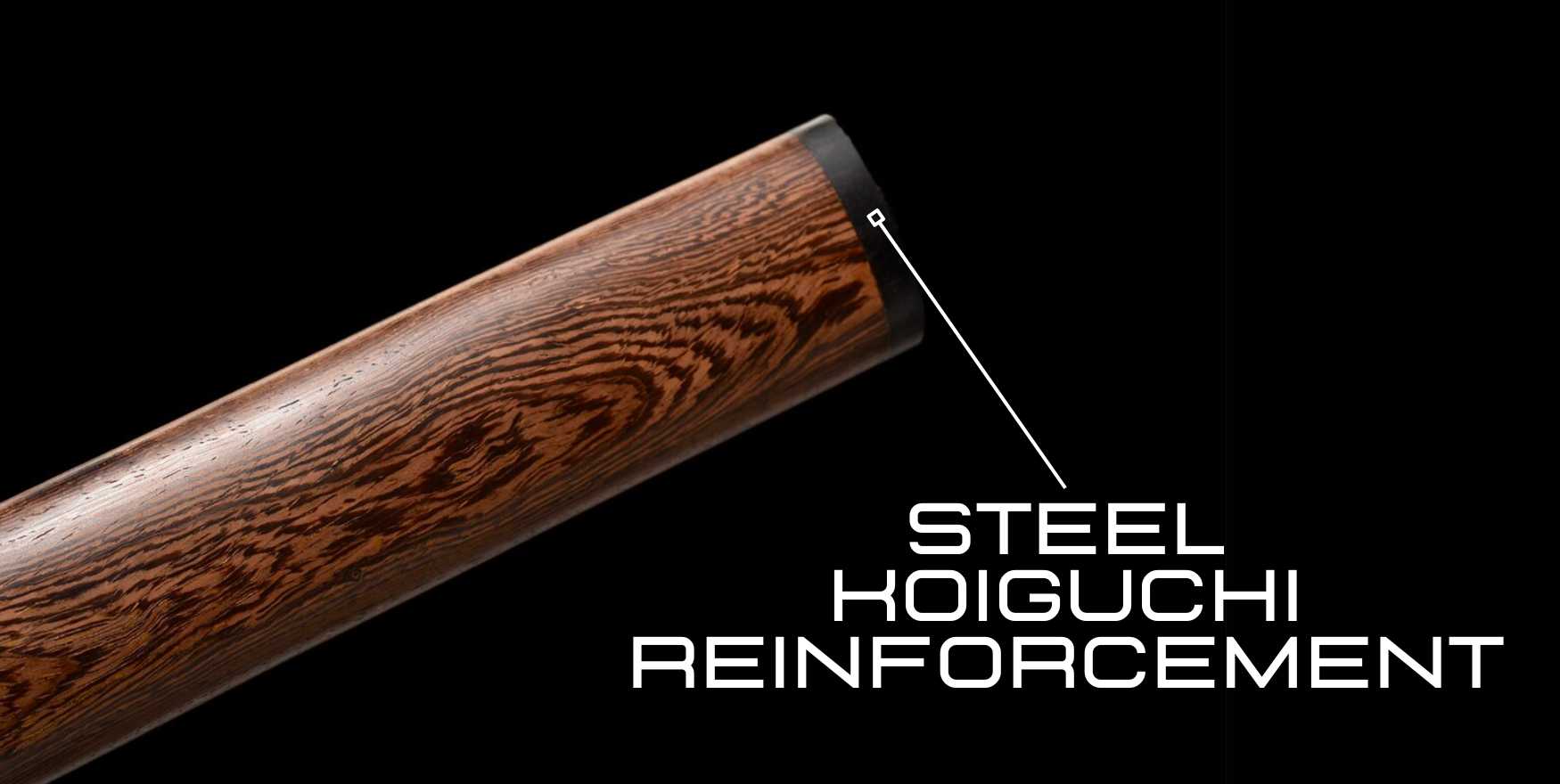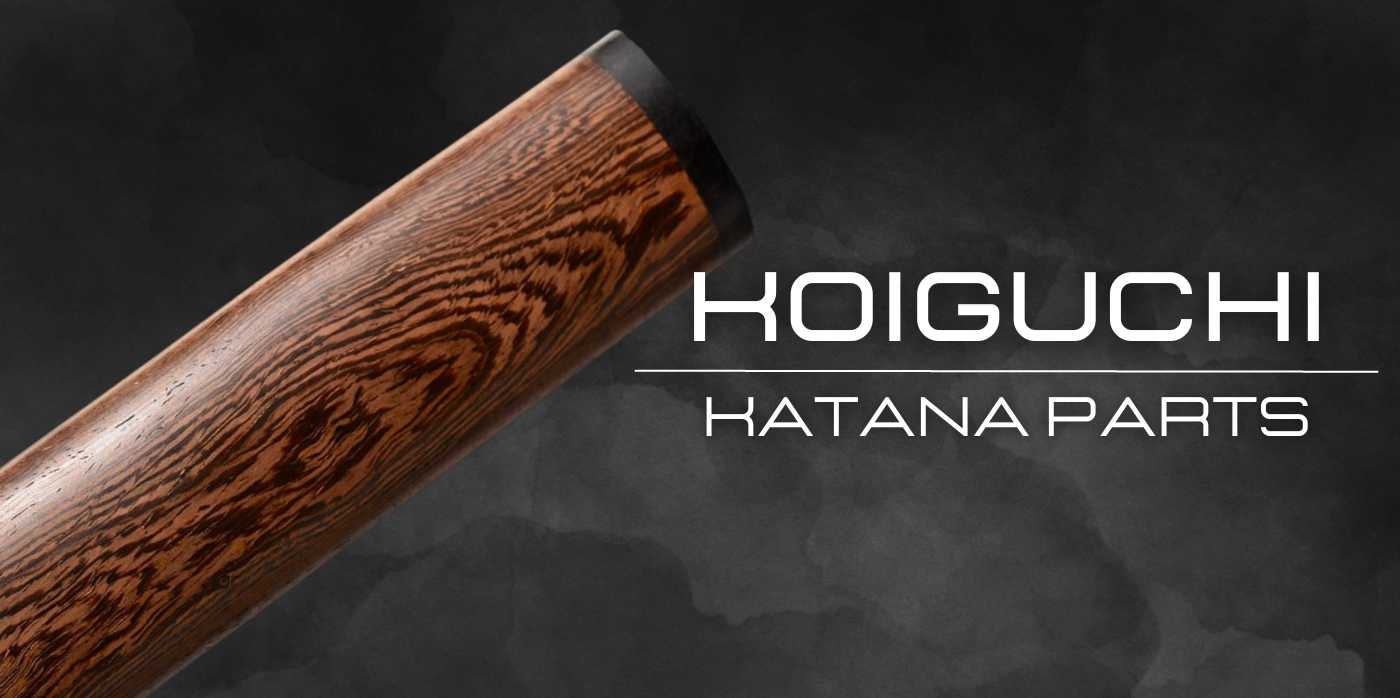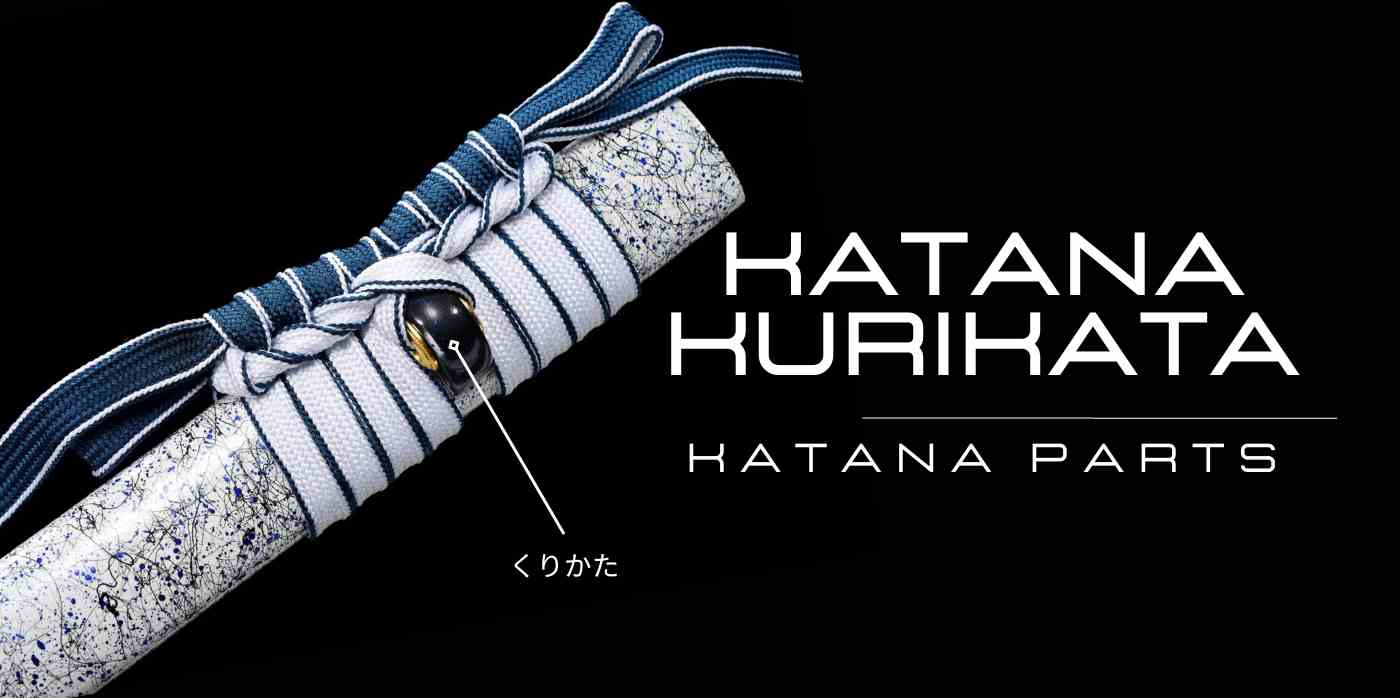What is a koiguchi
The Koiguchi is the mouth of the Saya (scabbard) where the katana is sheathed. It's a crucial aspect of the scabbard design, not merely serving as a protective cover, but also ensuring a snug fit for the blade, thus preventing it from falling out or getting damaged.

Koiguchi Materials
The Koiguchi, which is the mouth of the scabbard (saya) of a Japanese sword, is traditionally crafted with meticulous attention to both material and design to ensure a snug fit and aesthetic harmony. Here are the materials typically used in the construction of a koiguchi:
Hardwoods: Traditional koiguchi are typically crafted from durable hardwoods.
Common choices include Honoki (Magnolia obovata) and Shitan (Pterocarpus indicus) due to their strength, durability, and ability to maintain a firm grip on the sword over time.
Buffalo Horn: In many cases, sections or inlays of buffalo horn are employed to reinforce the edges of the koiguchi.
Buffalo horn adds a level of durability and wear resistance to the mouth of the scabbard, making it more robust against the repeated drawing and sheathing of the sword.
Lacquer: The wooden koiguchi may be treated with layers of lacquer to shield it from moisture, thereby enhancing its durability.
Additionally, lacquer gives the koiguchi a refined, glossy finish, elevating the aesthetic appeal of the scabbard.
Each of these materials contributes not only to the functional efficiency of the koiguchi in securely housing the blade but also to the aesthetic finesse of the entire sword setup. The blend of sturdy hardwoods, reinforced buffalo horn, and the polished finish of lacquer embody the rich tradition and meticulous craftsmanship characteristic of Japanese sword arts.

How much is a Koiguchi
A koiguchi range anywhere from $20 to $200. The price range of a Koiguchi can significantly fluctuate depending on various elements such as the materials employed, the level of craftsmanship, and whether it's bespoke or produced on a larger scale. Here’s a more comprehensive breakdown:
Material: Higher-quality materials like premium hardwoods or buffalo horn will drive up the cost compared to more common or synthetic materials.
Craftsmanship: A koiguchi crafted by a skilled artisan or a well-regarded workshop will likely cost more than one produced in a factory setting. The level of detail and the amount of time spent on crafting and finishing the koiguchi also play a significant role in determining the price.
Customization: Custom-made koiguchi, designed to fit a specific sword or to meet individual aesthetic preferences, will typically be more expensive than standard, off-the-shelf options.
Origin: Koiguchi sourced from Japan, crafted by recognized artisans, may carry a premium due to the authenticity and traditional craftsmanship involved.
Condition: New koiguchi will generally cost more than used or pre-owned ones.
Brand Reputation: Established brands or workshops with a reputation for quality and authenticity might charge more for their products.

Koiguchi common problems
The Koiguchi, being the mouth of the scabbard where the sword is inserted, is a critical part of a sword scabbard. However, it can encounter several issues over time or due to poor construction or maintenance. Here are some common problems associated with Koiguchi:
- Wear and Tear: The koiguchi can become worn or loose over time, especially with frequent drawing and sheathing of the sword. This wear can lead to a loose fit which may cause the sword to fall out, or rattle within the scabbard.
- Cracking or Splitting: If the koiguchi is made of wood or horn, it may crack or split, especially if subjected to impact, temperature extremes, or improper handling.
- Shrinkage or Warping: Materials like wood can shrink or warp due to changes in humidity and temperature. This can lead to a misfit between the sword and the koiguchi, affecting both the retention and the ease of drawing and sheathing.
- Improper Fit: A poorly constructed koiguchi may not fit the sword properly from the start, which can lead to difficulties in drawing or sheathing, and potentially damaging the sword or scabbard over time.
- Aesthetic Deterioration: The finish on the koiguchi can become scratched, chipped, or otherwise marred, detracting from the overall appearance of the sword and scabbard.
- Material Quality: Inferior materials or subpar b can precipitate a variety of issues, including the ones mentioned above.
- Misalignment: Should the koiguchi be misaligned with the scabbard's remaining portion, it may result in challenges during the drawing and sheathing process. Additionally, it might contribute to the deterioration of the blade's polish or even possibly cause minor cuts on the edge.
To mitigate these issues, proper care and maintenance are crucial. It’s also advisable to have a reputable craftsman construct or repair the koiguchi to ensure a proper fit and long-term functionality.
11 Tips for preserving the koiguchi
Preserving the koiguchi is an integral part of maintaining your sword and its scabbard. Here are some tips to help ensure the koiguchi remains in good condition over time:
- Regular Inspection: Regularly inspect the koiguchi for signs of wear, cracks, or any other damage. Catching problems early can prevent more serious damage in the future.
- Gentle Use: Be gentle when sheathing and drawing the sword to prevent unnecessary wear and tear on the koiguchi.
- Avoiding Impact: Avoid hitting or dropping the scabbard on hard surfaces to prevent cracks or other damage to the koiguchi.
- Proper Storage: Store your sword in a dry, cool, and stable environment to prevent warping, cracking, or other damage due to changes in temperature or humidity.
- Cleaning: Keep the koiguchi clean from dust and debris which can scratch or wear the interior.
- Lubrication: Some experts recommend applying a small amount of oil to the inside of the koiguchi to help preserve the wood and facilitate smooth drawing and sheathing. Be sure to use an oil that's safe for both the koiguchi material and the sword.
- Professional Repair: If the koiguchi becomes damaged or worn, seek professional repair to ensure it's restored to a safe and functional condition.
- Avoid Force: Never force the sword into the scabbard. If the sword doesn’t fit smoothly, there might be an issue that needs addressing.
- Material Quality: Ensure the koiguchi is made from high-quality materials and crafted by reputable craftsmen to ensure its durability and proper fit.
- Educate Yourself: Learn about the proper care and maintenance of your sword and scabbard from reputable sources or experts in the field.
- Regular Maintenance: If possible, have a professional sword smith or a knowledgeable practitioner assess the koiguchi and the rest of the scabbard periodically to ensure that they remain in good working order.
By following these tips and ensuring you treat your sword and scabbard with respect and care, you can help preserve the koiguchi and ensure a long life for your cherished weapon.
How to repair the koiguchi of a katana
Fixing the koiguchi of a katana can be a nuanced endeavor, and it's generally recommended to seek advice from or engage a professional to guarantee that the repairs are executed accurately and securely. Nonetheless, if you possess the required expertise and understanding, here's a simplified guide on how it can be accomplished:
- Inspection: Thoroughly inspect the koiguchi and the saya (scabbard) to understand the extent of the damage. Look for cracks, splits, or wear.
- Disassemble if necessary: If required, carefully disassemble the saya from the fittings to access the koiguchi more easily.
- Cleaning: Clean the area around the koiguchi carefully to remove any dirt, oil, or debris.
- Wood Filler: If the damage includes small cracks or splits, a wood filler can be used to repair these areas. Apply the wood filler according to the manufacturer’s instructions, and shape it to match the original contour of the koiguchi.
- Gluing: If the damage is more severe, such as a piece of the koiguchi being broken off, you might need to glue it back together. Use a strong wood adhesive, and ensure you have clamps to hold the pieces together while the glue dries.
- Clamping: Ensure that any glued pieces are clamped securely while drying to maintain the correct shape and alignment.
- Shaping and Sanding: Once the glue and/or filler has dried, carefully shape and sand the koiguchi to restore its original appearance and to ensure the katana fits snugly yet smoothly.
- Finishing: Apply a finish that matches the original, such as lacquer, to help protect the wood and improve the appearance.
- Reassembly: If you disassembled the saya, carefully reassemble it.
- Test the Fit: Test the fit of the katana in the saya, ensuring a snug yet smooth fit. The blade should slide in and out easily without any force.
If at any point you feel uncertain, it’s advisable to consult with a professional for guidance or to complete the repair.
After repair, keep up with regular maintenance to prevent further damage to the koiguchi or any other part of the katana and saya.
Keep in mind, every situation and the extent of damage can be distinct, and what proves effective in one case might not in another. It's always prudent to exercise caution and seek professional advice when uncertain.





